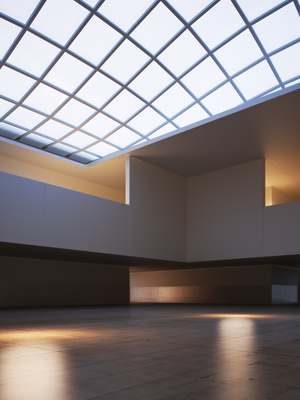
What is it?
Second generation daylighting technologies, like fiber optic and heliostatic concentration, are essentially transmissible skylights. Traditional skylights are holes in the roof. Light tubes improved the skylight, allowing it to target a specific area, as long as it was the top floor. These new daylighting technologies can take light from the roof and transmit and distribute it to interior spaces, even the basement. These can be a significant improvement over traditional skylights and light tubes.
How does it work?
Daylighting technologies work by concentrating the light and directing it through highly reflective pipes to the desired end use. One common technology utilizes fiber optic cables to transmit sunlight directly with very low loss. A second common technology involves using a heliostatic collector to concentrate the light and then transmit it through reflective piping.
What are the most appropriate applications?
The advantage of these systems is that they can be used in any type of indoor lighting application. However, the desired end use must typically be less than 200 m (~655 feet, or two football fields) away from the solar collection source.
What are the savings?
The savings for these systems are highly dependent on the lighting that can be offset. Typical projects thus far are small scale, saving between $500 and $1,000 annually.
What are the non-energy benefits?
The most significant non-energy benefit is the daylighting itself. Natural daylight has a very positive impact on the health and attitude of indoor occupants compared to artificial light.
What is the status/availability of the technology?
Heliostatic concentration and fiber optic distribution systems are not widely marketed, so reaching out to the manufacturer directly to determine the nearest available vendor is the best approach.
What kinds of incentives/programs are available?
Right now, this technology would typically be evaluated under Custom Rebate programs. Incentives will vary depending on the lighting usage that can be saved. However, systems would likely need to save at least 5,000 kWh annually to be viable and qualify for program incentives.




